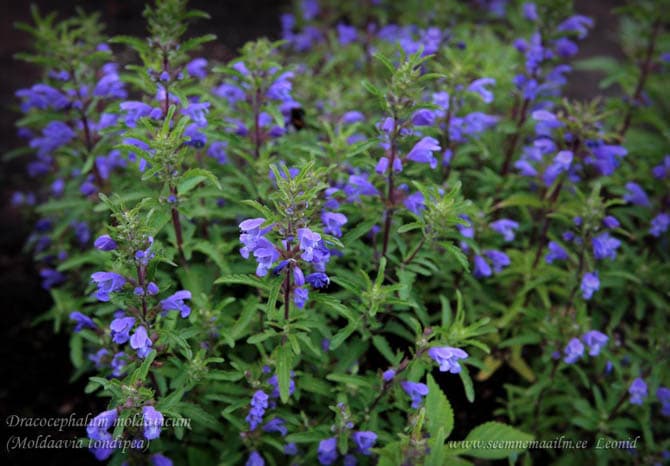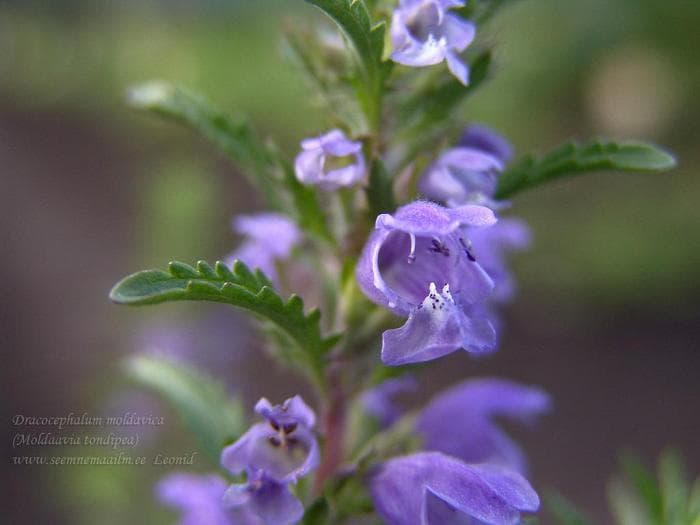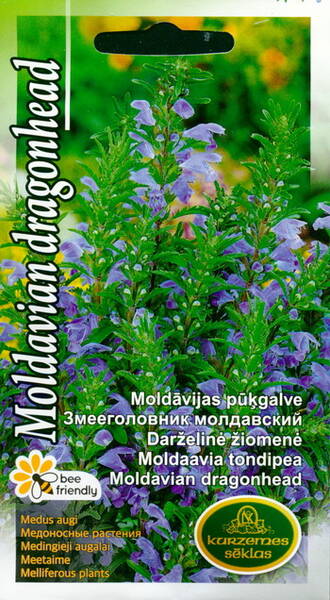Ex Tax: 1.25€
A harmonious combination of taste and healing qualities! Tones, heals, attracts bees!
An annual herbaceous plant of the Lamiaceae family. Sowing in mid-May - early June. Seeds germinate at a temperature of +5+7°C. Seedlings and adult plants endure a long cold snap. In the initial period of growth, the snakehead makes increased demands on moisture. Planting seedlings after 30-35 days according to the scheme 30x50 cm. Blooms in July.
The plant is photophilous, undemanding to soils and heat. The stem is erect, tetrahedral, branched, 50-70 cm high. The leaves are short-petiolate, opposite, oblong-ovate or oblong-lanceolate, serrated along the edge, dark green; apical leaves lanceolate. Flowers are pale purple. The leaves and the plant itself have a pronounced lemon flavor and can be used as a substitute for lemon balm and catnip in dishes and drinks. The weight of one plant is about 240 g, the yield is 1.8 kg/m2.
The number of seeds in 1 gram of the Moldavian dragonhead = 460-510 pieces.

* The dragonhead does not differ in special beauty (height is about 50-80 cm). But the smell of this plant is wonderful! The snakehead occupies one of the leading places in aroma and herbal medicine, but so far, unfortunately, it is rarely grown in gardens - but it's worth it.
The pleasant fresh mint-lemon smell of moldavian dragonhead buds and leaves, collected before flowering, is also preserved in dried form (for three years).
Fresh and dried dragonhead leaves are used as a spice and added to a variety of dishes, as a seasoning for meat, game and vegetables, as an integral part of fragrant herbs when pickling cucumbers and tomatoes. Serpentine head is also added to drinks (tea, compote), in the preparation of liqueurs and flavoring of vinegar.
The flowers of the dragonhead, when viewed closely, are very elegant, they are light purple, dark blue or white. With an abundance of nectar, these flowers attract many bees to the garden.
The dragonhead is very easy to grow, as it is an early maturing and relatively cold-resistant plant. In April-May, dragonhead seeds are planted directly in the ground (without soaking, otherwise mucus is released from the seeds and they stick together!).
This plant is suitable for any fertile and moderately moist soil, except for acidic and marshy, bright place.
At first, the shoots of the moldavian dragonhead develop slowly, they need to be thinned out (10 cm apart), but then the bushes grow very quickly and bloom.
Remember to leave a few bushes for seeds (do not cut leaves and buds from them). With a strong increase in the seed of the dragonhead (trihedral nut) resembles the head of a snake - from this similarity the name of the plant originated.

Eng.: Moldavian dragonhead, Moldavian balm, Moldavian dragon's head. Bot. syn.: Moldavica moldavica (L.) Britt.












